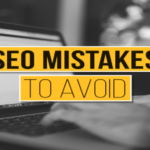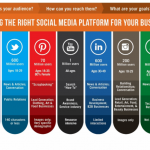Customer communication is vital for any business. However, streamlining your communication with your customers is what counts.
Email marketing is one of the main ways to maintain consistent communication with your customers. Whether you want to inform your customers about new services/products or announce sales or discounts on festive seasons, emails pave the way for you. So, 75% of email revenue comes from personalized email campaigns, which is only believable.
The challenge, however, is to automate the email marketing process. After all, running email marketing campaigns will hit a dead end when upscaling your business. Here’s when automation is required.
This article highlights five ways to automate email marketing workflow, save time and enhance marketing. Let’s dive in right away.
- Write your marketing plan
Email marketing has immense potential to showcase your brand and attract new customers. However, when trying to revamp your email marketing automation, you must be clear on your marketing plan and who your prospects are. Identify the current loopholes in your email marketing plan and write your marketing plan to clarify your business goals.
Consider the following points when creating an email marketing plan:
Create a list of your objectives
To see how effective automation campaigns really will be, you need to create a list of your objectives. Be as specific as you can since it’ll help you analyze results better.
Identify your prospects
Create a list of contacts’ demographics, criteria, their online behavior based on the past interactions with your business. Now find out whether the target is a new lead or a latent lead and if they’re engaging actively on your social media site.
Once you have a roadmap in your head, it’s time to write. However, before writing down , consider the following practices:
- Personalize customer campaigns
Tailor email campaigns that suit the individual contact’s preferences. Sending personalized emails for each target segment helps drive more engagement rates.
- Delete the clutter
Not all subscribers will engage with your business through any channel. Delete the duplicate ids, invalid ids and subscribers that aren’t generally active. Focus on the customers that are genuinely interested in your business and its products.
- Run time-sensitive campaigns
Schedule your emails depending on the target audience’s time zone so that they don’t end up receiving emails at odd times. You should know the time-zones of your customers first based on their geographic location.
- Send emails with consent
Always get your subscriber’s consent before sending out emails. Many email marketing tools need permission from contacts to send emails.
- Segregate email marketing funnels
Not all customers respond the same way to every email you send. Some may appreciate your subject, sales, or writing style, while some would immediately move your emails to the spam. Hence, you need to segregate them into different, smaller clusters. You can segment them based on the following parameters:
- Interests
- Geography
- Demographics
- Personal interests
You can even analyze their shopping behavior through metrics like the frequency of engagement, last engagement, how often they’re active, items in the cart, purchase amount, items abandoned, etc.
While segregating customers makes it easier for you to test your campaigns, you also need the order to apply to different leads, from welcoming them to several changes in their behavior. Ensure to keep an email sequence list ready for your leads. Also, a great way to ensure you have legitimate subscribers is by using email verification tools.
With the help of the segmentation, you’ll get the overall purchase history of customers, the number of visits to your website, etc. Use all these parameters to create a segment of similar customers, and you can address their problems.
- Select an email marketing tool or software
Of the many email automation tools in the market, choosing the best one for your business is key. Research the available tools, and their features, analyze what your competitors use, and then select a tool based on your budget.
Consider AI integration with Make
You need a tool or an intuitive platform to create and automate workflows across several apps. Consider AI integration with Make to achieve this. It analyzes unorganized data like survey responses, documents, emails, etc. You can build and automate workflows with a simple drag-and-drop interface.
- This integration could work for you in the following ways:
- Analyze brand mentions and automate workflows
- Identify leads from responses to outbound email campaigns
- Alert the sales or marketing team as and when you find vital insights
Using such platforms is a sure-shot way to boost your sales and revenue, making processes more efficient. Invest in such AI-powered email marketing software to improve the effectiveness of campaigns while also saving time. However, dig deep into your requirements so that you go for a platform that is value for money.
- Use A/B testing and measure the results
A/B testing, also known as split testing, lets you compare two target segments and determine which performs better. For instance, you can create two different versions of email campaigns with varying subject lines, CTAs (Call To Action), or the email’s layout and content.
There are several reasons why A/B testing is valuable for email marketing automation. They’re listed below:
- Optimize campaign performance
Since A/B testing enables marketers to test different versions of email campaigns, they can compare various metrics and improve click rates, open rates, and, eventually, conversions.
- Minimizes errors and risks
When you test an email campaign on a set of subscribers, you prevent sending a poorly performing email to the entire subscribers’ list. Instead, after trying two versions of email campaigns, you know the winning drive and send it to the subscribers’ list. Doing so minimizes the risk of sending a poor email list and improves the chances of boosting conversion rates.
- Increase ROI
Data is vital for all businesses to make informed decisions. A/B testing helps marketers make data-driven decisions that lead to a better return on investment (ROI) for their marketing efforts.
- Recognize practices that give ROI
With the help of A/B testing, marketers can identify the practices that work and gain insights into what and why a certain way doesn’t work with the audience. Using this information, they can revamp their existing campaigns and enhance the overall performance of future campaigns.
- Nurture, optimize, repeat
One of the primary benefits offered by an email campaign is they are easy to adjust. Plus, they are relatively inexpensive to keep repeating. Testing the campaigns on an ongoing basis is doable since you’ll be up-to-date with customer trends and preferences. One way to do so is to use email tracking tools.
- Use email tracking
Identify when a recipient opens your email and create a timely follow-up. Use email tracking features to monitor the recipient’s frequency, day, time, CTA, etc.; You can easily integrate this feature into your inbox with an extension such as MySignature. Incorporating an extension saves time and reduces the hassle of installing multiple tools.
- Monitor results
Optimizing and tracking emails will help you know your customers better. However, ensure you monitor the results weekly, biweekly, or monthly. Results monitored over time help you identify recurring issues that need your attention.
- Don’t give up
Lastly, when it comes to email automation, there are more than just a few emails to send. Simply because the prospect didn’t take action depending on the first email you sent doesn’t always mean they’re a lost cause.
The key is to keep nurturing the lead. You can set up sending emails depending on how many converts, how many don’t, whether they leave an item in the cart, or other reasons.
It’s time to let automation flood your customers’ inboxes
Automating email marketing saves the most crucial aspect for any business, time. You can then spend this time on the customers and work on areas that demand your attention. Moreover, the automation process helps you create personalized marketing campaigns for customers, which increases the effectiveness among the target audience and customers.
Recognizing your email marketing automation tool and creating workflows that trigger specific customer actions is essential. The workflows could be targeted to generate more leads, convert more one-time buyers to customers, etc. Ensure that the automation tool you choose works with your email marketing workflow.




